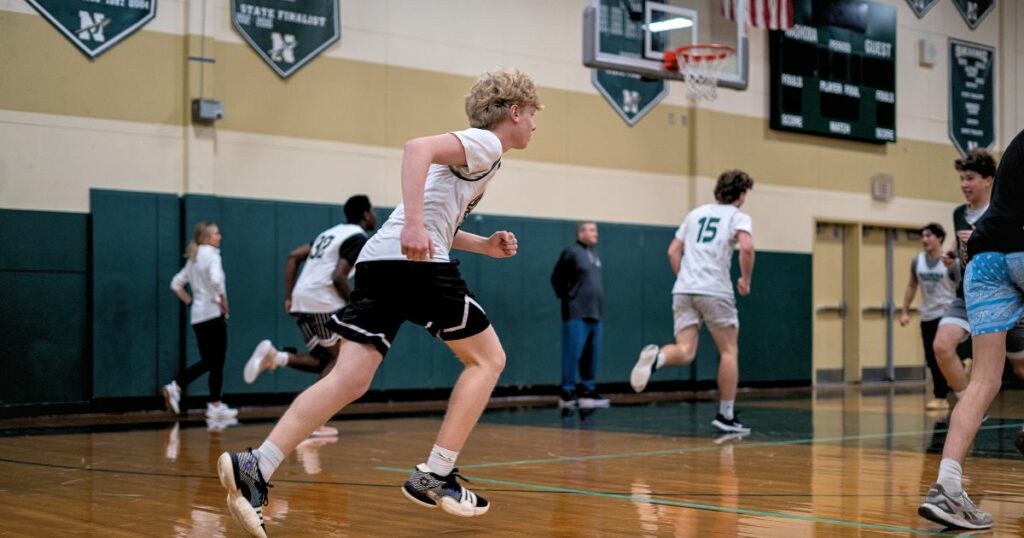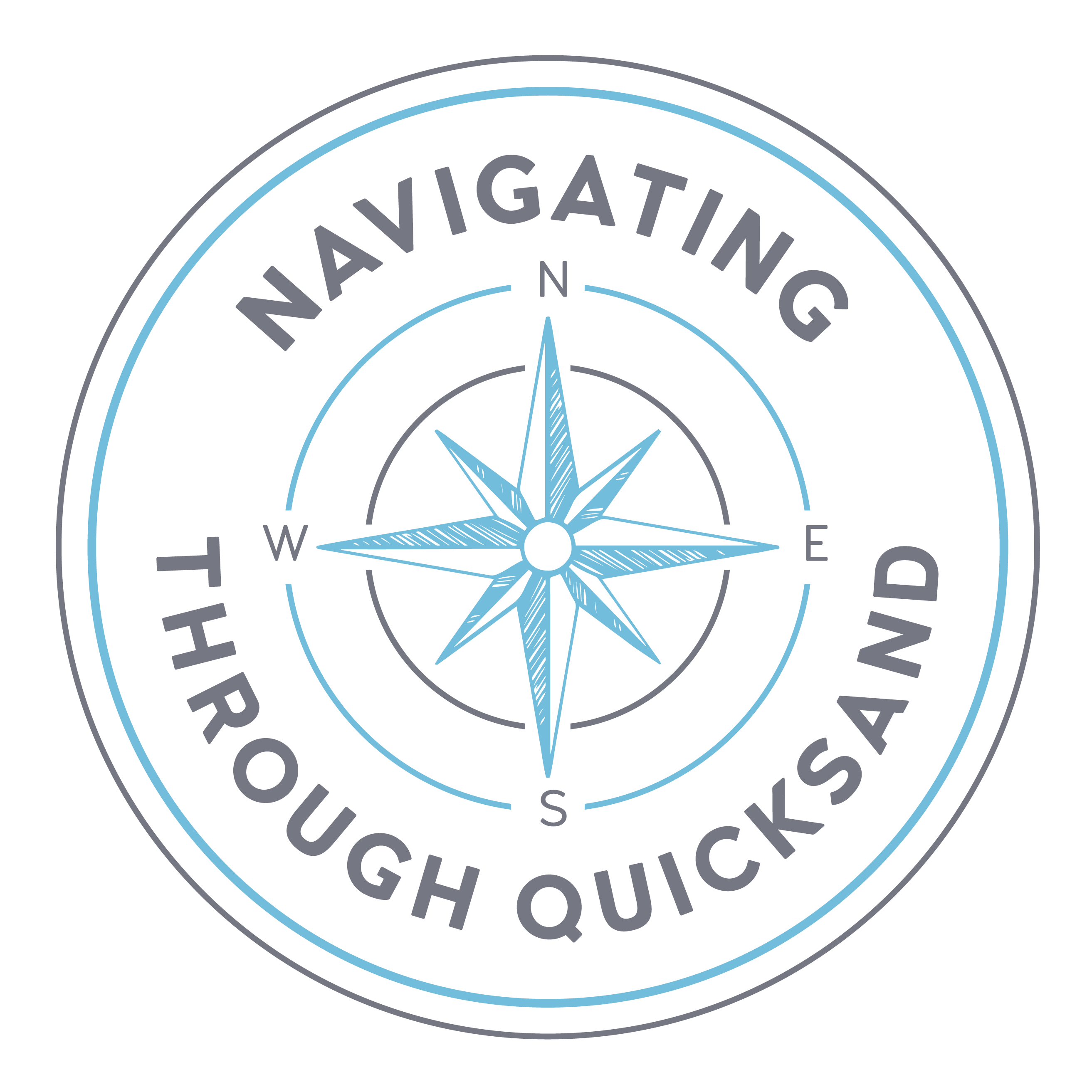Teamwork is more than just skills and tasks; it’s about connecting on a personal level. Quicksand, LLC supports Massachusetts high school sports teams by focusing on emotions.
We teach athletes about understanding feelings, being empathetic, and communicating better.
In sports, it’s not just about playing well; it’s also about knowing your teammates. Navigating Through Quicksand, LLC believes that when teams connect emotionally, they become amazing.
Understanding and valuing the emotional dimension can turn an average team into an extraordinary one.
What is the Most Overlooked Dimension of Teamwork?
The most overlooked dimension of teamwork is emotional intelligence. This includes knowing your feelings, being understanding, and talking effectively.
Athletes learn to handle emotions, understand teammates, and talk well. This is super important in the fast and pressure-packed world of high school sports.

Table of Contents
Most Overlooked Dimension in Athletic Teams
In sports teams, one key factor often ignored is the emotional side of teamwork. Emotional intelligence, empathy, and communication are vital for a team’s success and unity, even though they might not always get the attention they deserve.
Using Emotional Intelligence for Successful Team Collaboration:
- Emotional Intelligence: At the heart of effective teamwork lies emotional intelligence (EQ). It’s the ability to recognize, understand, and manage our own emotions, as well as to recognize, understand, and influence the emotions of others. Teams with high EQ excel at navigating interpersonal dynamics, resolving conflicts efficiently, and enhancing overall collaboration.
- Empathy: Closely tied to emotional intelligence is empathy, the ability to put oneself in another’s shoes. Empathetic team members can understand and relate to the feelings of their colleagues, fostering a supportive and understanding team environment. This connection builds a strong foundation for trust and open communication, critical components for team success.
- Communication: Successful teams thrive on effective communication. It’s not just about sharing information; it’s about doing so in a way that is respectful, clear, and mindful of others’ perspectives and emotions. Teams that communicate effectively steer clear of misunderstandings and conflicts, making it easier to work together towards common goals.
Using Emotional Intelligence for Teamwork and Leadership
The combination of these elements creates a strong force within teams.
When team members show emotional intelligence and empathy, they can communicate more effectively. They build a positive and productive environment where everyone feels valued and understood.
As a result, this leads to enhanced collaboration, creativity, and overall team performance.
However, having these skills and implementing this dimension within a team isn’t always straightforward. It requires commitment from each team member and, importantly, a leadership that values and exemplifies these qualities.
Leaders play a crucial role in setting the tone for the team’s emotional culture, and their actions and attitudes can significantly impact the team’s dynamics.
Why is Emotional Intelligence Important in Teamwork?
The emotional dimension involves navigating through the complex landscape of human emotions and interpersonal relationships. Ignoring this dimension can lead to miscommunication, conflict, and ultimately, a decrease in team effectiveness.
However, when prioritized, it creates an environment where every member feels seen, heard, and valued, paving the way for genuine collaboration and strong synergy.
Key Factors Influencing Team Dynamics

When we talk about teamwork, it’s easy to focus on the tasks at hand or the goals we want to achieve. But there’s a deeper layer that often gets overlooked, yet it’s crucial for the success of any team.
This layer involves understanding how the cultural dimension and individualism-collectivism play significant roles in shaping team dynamics.
Culture Dimension
Culture impacts how we see the world, interact with one another, and approach problems.
It’s like a set of invisible rules that guide our behavior in a group. When team members come from diverse cultural backgrounds, these differences can enrich the team by bringing in a variety of perspectives.
However, they can also lead to misunderstandings if not navigated carefully.
Individualism-Collectivism
This concept, part of Hofstede’s cultural dimensions theory, explains how people from different cultures value either individual achievement or group success.
In individualistic societies, personal accomplishments are celebrated, and independence is valued. On the flip side, collectivist cultures prioritize group harmony and the success of the team as a whole over individual wins.
Understanding where your team members fall on this spectrum can help in structuring tasks, communication, and reward systems in a way that resonates with everyone’s cultural values.
Hofstede’s Cultural Dimensions
Hofstede’s cultural dimensions offer a framework to understand these differences beyond just individualism and collectivism.
It includes factors like power distance (how authority is viewed), uncertainty avoidance (comfort with ambiguity), masculinity-femininity (the value placed on competitiveness vs. cooperation), long-term orientation, and indulgence versus restraint.
These dimensions provide a lens through which we can view and better understand the motivations and behaviors of team members from various cultural backgrounds.
The key takeaway here is that understanding what is the most overlooked dimension of teamwork—the cultural and emotional dimensions—can significantly influence how effectively a team operates.
By being mindful of these aspects and incorporating strategies to address them, teams can navigate the complexities of human dynamics to achieve not just success, but also a sense of unity and fulfillment in their collective endeavors.
Conclusion
In wrapping up our exploration of teamwork, we’ve delved into various dimensions that contribute to a team’s success. From the significance of emotional intelligence and the impact of cultural dimensions to the foundational elements of trust, unity, and effective communication.
Successful teamwork is multi-faceted and complex. However, there’s one dimension that often doesn’t get the attention it deserves – the emotional dimension.
Recognizing what is the most overlooked dimension of teamwork is crucial for any team aiming for success. In addressing common teamwork challenges, from conflict resolution to adapting to change, especially in virtual teams.
It becomes clear that at the heart of these solutions is emotional intelligence.
Contact us at Navigating Through Quicksand, LLC. Ashley Gustafson is an inspirational speaker and personal development coach in Massachusetts with 15+ years of experience. She offers confidence coaching programs in Massachusetts, including leadership and communication workshops. Our culture values differences, embraces change, and promotes open communication.
Discover more about how we can assist you in this journey by visiting our services page. Together, let’s unlock the true power and innovation of your team.
Frequently Asked Questions about Teamwork
What is the most important thing for teamwork?
The most crucial aspect of teamwork is effective communication. Without clear and open lines of communication, misunderstandings can occur, leading to conflict and a breakdown in collaboration.
When team members communicate effectively, they can share ideas, address issues, and work together towards common goals, fostering a productive and harmonious work environment.
How does team size affect team dynamics?
Team size plays a significant role in shaping team dynamics. Smaller teams tend to have more direct and frequent communication, which can enhance collaboration and make it easier to build strong relationships among team members.
However, larger teams may benefit from a wider variety of skills and ideas, although managing communication and ensuring everyone’s voice is heard can be more challenging.
The key is finding the right balance to maximize the team’s strengths while minimizing potential communication barriers.
Our Content
Our content is carefully created and edited by Ashley Gustafson to ensure that the content is accurate, reliable, and up-to-date. Navigating Through Quicksand, LLC is a trusted inspirational woman, inspirational speaker, and personal development coach in Massachusetts for confidence coaching programs for women such as leadership workshops, communication workshops, low self-confidence programs, and more. Navigating Through Quicksand, LLC has empowered individuals with over 15 years of experience working with students and athletic teams from local communities.



